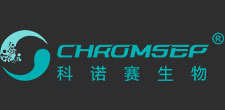Exosomes industrial separation and purification solutions
The research and application of exosomes have always maintained a high degree of topic and attention.
Exosomes 'special structure and a large number of active biomolecules determine their diversified clinical value. In recent years, domestic researchers 'research on exosomes in the field of medical treatment and medical beauty has also shown explosive growth.
Although exosomes are highly regarded in the market, there are few commercial applications. From the current market point of view, mainly due to the limitations of purification technology for large-scale production of exosomes, the yield is low, which has been restricting the application of clinical transformation.
Due to the large molecular weight of exosomes, superporous fillers seem to be a more effective choice to obtain exosomes of high quality, purity and yield.
● Exosomes encyclopedia
Exosomes (EXO) are the source of endosomes, which are membranous vesicles released into extracellular matrix after fusion of MVBs with plasma membrane, with diameters ranging from 30 to 150nm. Exosomes can be secreted by all cell types under normal and pathological conditions. Exosomes naturally exist in body fluids such as blood, saliva, urine, and milk.
Exosomes contain a variety of complex biological macromolecules, including proteins, nucleic acids and phospholipids, and have rich biological functions. They can transfer lipids, carbohydrates, proteins, messenger RNA (mRNA), microRNA (miRNA) and DNA from one cell to another, thus exchanging genetic information, reprogramming host cells, and carrying out intercellular communication.
● Application of exosomes
Messengers in the medical field
The clinical application of exosomes is receiving wide attention. In vitro diagnostic applications, studies have shown that exosomes can be used as reliable markers for tumor diagnosis and classification, providing a new perspective for early detection of different types of tumors. In immunological studies, exosomes derived from immune cells contain antigenic peptides-MHC complexes and various antigens, which can significantly inhibit tumor growth. Exosomes that promote immunosuppression can effectively inhibit inflammatory factors and have superior anti-inflammatory ability. In the study of drug delivery vehicles, exosomes have high stability, biocompatibility and low immunogenicity, and can penetrate biological barriers, which can effectively help drugs to be rapidly transported and released in vivo, thereby improving the therapeutic effect of drugs and reducing side effects.
A new favorite in medical beauty
Exosomes immediately attracted a lot of attention after they entered the field of medical beauty. Exosomes of animal and human stem cells have been proved to have multiple functions such as promoting tissue regeneration, anti-aging, anti-inflammatory and anti-allergic, and immune regulation by activating multiple signal pathways. They have been widely used in light medical beauty projects such as functional skin care, anti-aging, regeneration and repair, and have achieved good results. Moreover, exosomes are beginning to be used in the field of hair management to improve hair loss and promote hair growth.
Purification of Exosomes
In practical applications, exosomes mixed with all components are unacceptable, and obtaining high purity exosomes is crucial for subsequent research applications. For example, looking for exosomes specific to asymptomatic forms of a tumor; early ovarian cancer or gastrointestinal cancer requires a purer exosome population.
Common purification methods have limitations
At present, the field of exosomes has changed from pure scientific research to industrialization. How to realize large-scale separation and purification of exosomes in industrial scale-up production is an urgent problem to be solved.
The common purification methods for exosomes in the market mainly include ultracentrifugation (UC), polymer precipitation (PP), immunomagnetic beads, molecular exclusion (SEC), tangential flow filtration (TFF), and these methods have certain limitations, either low purity, low yield, or complicated operation process, high cost, and most of them are scientific research grade.

● Exosomes purification process
Konosay embraces market demand and develops solutions suitable for exosome purification in combination with its own ultra-large pore chromatography technology. Due to the large molecular weight of exosomes (30~150nm), traditional fillers cannot purify substances of this size level, and superporous fillers are an inevitable choice. MoSphere? 70X DEAE/Q is a micron-sized chromatographic medium independently developed by Konase, which has a very good effect on the purification of exosomes.
Option 1 Exclusion chromatography (for industrial grade) Recommended
Step ① Compound mode chromatography purification:
Crystto shell 400 (anion exchange and hydrophobic dual function) composite mode chromatography medium is used to adsorb host cell impurities. Exosomes have large molecular weight and are excluded from direct flow through.
PS: Crystto shell 400 has a smaller pore size than Capto Core 400, ensuring recovery.
Step 2 Ion exchange chromatography purification:
Using MoSphere? 70X DEAE / Q super pore anion exchange chromatography medium for exosomes purification.
PS:MoSphere? 70X DEAE / Q has micron-sized pore size, higher loading capacity and faster mass transfer rate.
Scheme II Hydrophobic chromatography (for industrial grade)
Step ① Hydrophobic chromatography purification:
Use Butyl Chromrose? 4FF Hydrophobic chromatography medium to remove impurities such as host cells.
Step 2 Ion exchange chromatography purification:
Using MoSphere? 70X DEAE/Q super pore anion exchange chromatography medium to capture exosomes.
PS:MoSphere? 70X DEAE / Q has micron-sized pore size, higher loading capacity and faster mass transfer rate.
Flow chart of allocation scheme
Protocol Three-molecule size exclusion method (for scientific level)
Gel filtration chromatography purification:
Using Chromrose? CL 4B gel filtration chromatography medium, according to the principle that particles with different particle sizes flow through the chromatography column for different times, exosomes are separated from different samples.
Exosomes purification scheme is not only the above three kinds, but also can use a variety of methods according to actual needs, downstream purification is a complicated process, according to the actual situation to adjust the process scheme is the most wise choice.
Work hard and go further
As exosome research becomes clearer, the need for commercial scale-up becomes stronger. Konosay's ultra-large pore chromatography separation technology and products can effectively meet the large-scale separation and purification needs of exosomes in industrial production.
Kono Sai's achievements in downstream purification are obvious to the market. With the success of one application case after another, the purification process will become more and more mature, and the products will become more and more sophisticated.
It seems that Kono Sai, who is doing things steadily, is going further.






